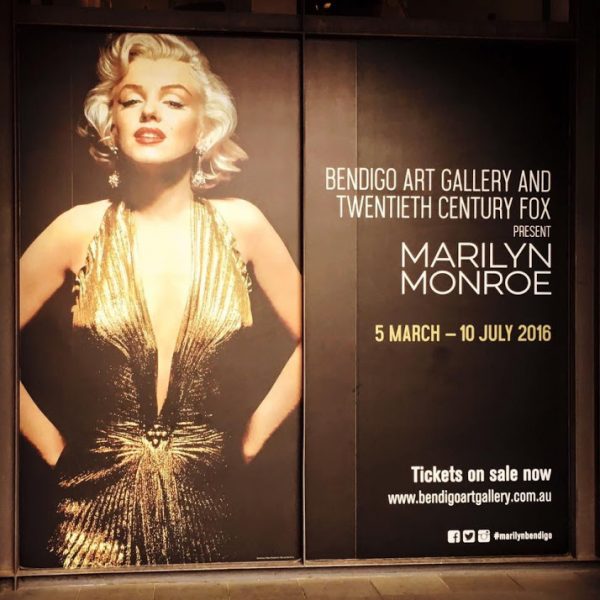
Australia’s unofficial ‘year of Marilyn’ has been a resounding success, as the Bendigo Advertiser reports.
“Bendigo Art Gallery’s Marilyn Monroe exhibition brought more than $13 million into the region, Victorian government modelling has shown.
Bendigo East MP Jacinta Allan announced on Wednesday $13.2 million in economic impact for Bendigo was derived from the four-month exhibition, exceeding the $11.2 million benefit forecast before the show opened.
‘We knew Marilyn Monroe would be a showstopper and it was,’ she said. ‘It demonstrates [the gallery] is a facility that brings many jobs, a significant amount of funds flowing into the Bendigo community.’
More than 140,000 visitors attended the ticketed exhibition in Bendigo between March and July this year. Almost half of those people were from Melbourne, travelling to central Victoria specifically to see the Hollywood-themed show.
The total cost of showing the Marilyn Monroe exhibition is unclear.
Ms Allan also said the strength of Bendigo’s gallery could inspire young people to choose an artistic career path, citing ‘strong’ art and design programs at La Trobe University as yet more evidence of the region’s creative strength.
But it was not only the Bendigo economy that benefitted from the blockbuster exhibition; the gallery’s curatorial manager Tansy Curtin said Marilyn challenged her institution artistically.
‘We went from working with fine art to working with contemporary culture.’
These new strings in her institution’s bow meant it was ‘re-defining’ what it meant to be a regional art gallery, no longer catering solely to a local audience but to national and international art-lovers as well.
Conservation work carried out during the exhibition also meant the gallery was ensure the longevity of Marilyn Monroe artifacts.
Because many of the items exhibited in the gallery were not normally showcased in a curated setting – many were kept inside the houses of their collectors before coming to Bendigo – Ms Curtin said many were returned to their owners in a better condition than when they arrived, having undergone conservation while housed in central Victoria.”